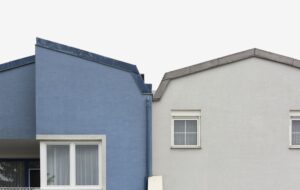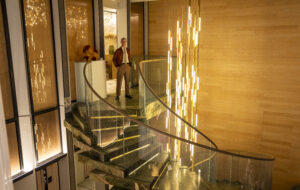|
(image: Iwan Baan) |
||
|
Sou Fujimoto’s structure in Kensington Gardens leaves us yearning for more permanent realisations of his utopian architectural vision The verdict on this year’s (2013) Serpentine pavilion, designed by the Japanese architect Sou Fujimoto, is in and unanimous: it’s a beauty. This conviction was only reinforced by the glorious weather on the day of its public opening, an improbable London sunlight dappling through its airy white lattices like a divine benediction, as crystalline, benevolent, and optimistic as Fujimoto’s architectural imagination. During the opening conversation, Fujimoto navigated with grace and humour between the Scylla and Charybdis of Serpentine Gallery directors Julia Peyton-Jones and Hans Ulrich-Obrist. Any number of threats and tensions could have upset this moment of pristine equanimity: from rainstorm to overcrowding, to heckling by unpaid interns. But the collective suspension of disbelief held right until the end, until the final question from the audience: could not the radical liberation of space and behaviour intrinsic to the pavilion’s architecture inspire the gallery’s directors to conduct their own spatial liberation, beginning with the removal of the “Keep off the grass” signs bossily guarding its perimeter? The unequivocal answer – “No!” – was the inescapable return to reality, disabusing us all of the dreamy architectural idealism that Fujimoto’s work inspires. For the vision presented by the pavilion, and the language Fujimoto uses to explain it, presses so many of architecture’s buttons: a gridded cloud effortlessly transcending the divisions between interior and exterior, artificial and natural; a simple and continuous modular construction smoothly mediating between the scale of furniture and the scale of the landscape; an open-ended environment for free occupation and social interaction – at once abstract, sensuous and popular. When presented with the built realisation of these ideals, it is not unreasonable to ask: why can’t our everyday built environment be more like this? The gallery’s response was a reminder that the requirements of public liability, occupational health and safety, property boundaries and status distinctions are far more powerful in the spatial structuring of the world than any architectural ideals could ever be. The opening of the pavilion coincided with revelations of the machinery for US government surveillance of the internet. A curious correspondence suggests itself here. If the internet had an architectural form, it might look something like Fujimoto’s pavilion – a free-form spatial matrix formed from innumerable, simple interconnecting elements, a construction offering extensibility, redundancy, accessibility and transparency. The sense of freedom and possibility the pavilion releases in its users is reminiscent of the giddy enthusiasm the internet once generated. Reality has sobered us up. But the promise, during short luminous moments, remains eternal. |
Words Julian Worrall |
|
|
||

















